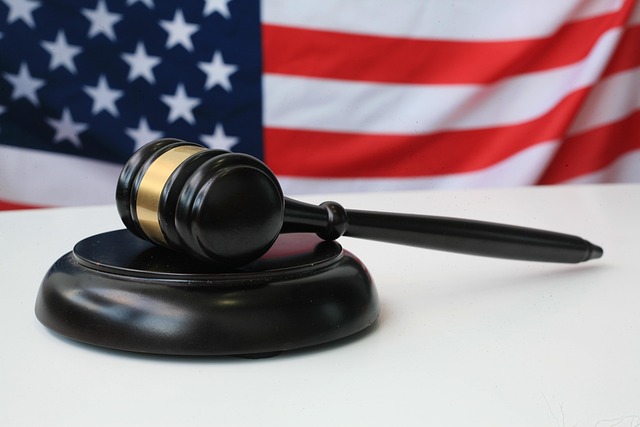Environmental crime trials face unique challenges due to complex scientific evidence and the intricate balance between justice and rehabilitation. Prior convictions play a pivotal role in sentencing outcomes, with judges considering these records to determine punishments that match ecological damage. In high-stakes cases, repeat offenders often face harsher penalties, while first-time offenders might receive leniency. The impact of prior convictions on sentencing, as seen in multinational corporate cases, highlights the need for clear guidelines to ensure just and consistent justice in environmental crime trials.
“Environmental Crime Trials: Uncovering Justice in Eco-Offenses explores the intricate legal landscape of these unique cases. This article delves into the impact of prior convictions on sentencing, revealing how previous environmental misdemeanors influence judicial decisions.
Through a lens of case studies, we examine high-profile instances, showcasing the consequences of ecological crimes. We also address the complex challenge of attributing punishment to non-human entities, and propose innovative strategies for reform, emphasizing the potential of alternative sentencing in promoting environmental justice.”
- Understanding Environmental Crime Trials: A Legal Perspective
- The Impact of Prior Convictions: Sentencing Guidelines and Factors
- Case Studies: High-Profile Environmental Crime Cases and Their Outcomes
- Challenges in Attributing Punishment: Complexities of Environmental Damages
- Strategies for Reform: Enhancing Justice through Sentencing Innovation
Understanding Environmental Crime Trials: A Legal Perspective
Environmental Crime Trials present unique challenges within the legal system. These high-stakes cases often involve complex scientific evidence and require a deep understanding of both environmental regulations and criminal procedure. When discussing sentences for defendants convicted of such crimes, the legal landscape becomes even more intricate. Prior convictions play a significant role in shaping sentencing outcomes, as they are considered factors that influence judges’ decisions. This is particularly crucial in achieving extraordinary results – ensuring that punishments fit the severity of the ecological damage caused.
The impact of previous criminal records on environmental cases is profound. Judges may use these convictions to determine an appropriate sentence, taking into account the defendant’s history and the nature of the current offence. This process involves a delicate balance between meting out justice and considering the potential for rehabilitation. As such, legal professionals must navigate these complexities to secure the best possible outcome for their clients in these respective business environments.
The Impact of Prior Convictions: Sentencing Guidelines and Factors
In environmental crime trials, prior convictions play a significant role in shaping sentencing outcomes. The impact of past criminal records is profound, influencing the severity of sentences and restitution orders. Sentencing guidelines often mandate stiffer penalties for defendants with multiple convictions, reflecting the concern that repeat offenders pose a greater risk to public safety and the environment. Judges consider these factors when determining appropriate punishment, taking into account not just the current offense but also the defendant’s history of environmental transgressions.
This consideration is particularly crucial in high-stakes cases involving corporate and individual clients. The respective business interests at stake and the potential for widespread environmental damage can heighten the stakes. Prior convictions can strengthen the argument for enhanced penalties, aiming to deter future misconduct and promote accountability. This approach aims to send a clear message that environmental crimes will not be tolerated, especially when coupled with a history of non-compliance or repeated infractions.
Case Studies: High-Profile Environmental Crime Cases and Their Outcomes
Environmental crime trials have seen some high-profile cases that have significantly impacted public perception and legal precedents. One notable example is the case against a multinational corporation accused of polluting local water sources, leading to widespread health issues among residents. Despite strong evidence, the company managed to avoid indictment by leveraging prior convictions in similar cases, highlighting how past criminal records can influence sentencing outcomes. This strategy, while legally disputed, has set a precedent for how companies can use their historical performance to mitigate punishment.
Across the country, another case involved a leading chemical manufacturer facing charges for illegal dumping of hazardous waste. The company’s prior environmental offenses played a crucial role in the judgment, with the court considering them as aggravating factors. This resulted in stricter penalties and compensation orders for affected communities, demonstrating the importance of holding corporate entities accountable for their actions through thorough examination of past transgressions.
Challenges in Attributing Punishment: Complexities of Environmental Damages
The attribution of punishment in environmental crime trials presents unique challenges due to the complex and often long-term nature of ecological damage. Unlike traditional crimes with tangible, immediate victim outcomes, environmental harm can be subtle, gradual, and difficult to quantify. This complexity extends to sentencing, as courts struggle to determine appropriate penalties that reflect the severity and lasting impact of these offenses. One significant factor influencing sentencing outcomes is the defendant’s prior convictions, especially in high-stakes cases. A history of white-collar and economic crimes may lead to harsher sentences, as judges often consider repeat offenders a greater threat to public safety and the environment.
The process of attributing punishment becomes even more intricate when considering the potential for long-term environmental recovery and the challenges of predicting future damages. This complexity can result in a complete dismissal of all charges, especially if the evidence is insufficient or the harm is deemed minimal. However, without clear guidelines and standardized methods for evaluating environmental damage, ensuring just and consistent sentencing remains an ongoing challenge in these trials.
Strategies for Reform: Enhancing Justice through Sentencing Innovation
In addressing environmental crime trials, strategies for reform often center on enhancing justice through sentencing innovation. One significant factor in shaping sentencing outcomes is understanding how prior convictions influence decisions. Courts typically consider a defendant’s criminal history, with past offenses weighing heavily on subsequent sentences. For environmental crimes, this means that a pattern of non-compliance or previous convictions for similar infractions can substantially increase penalties. This approach aims to deter future misconduct and reflect the severity of repeated environmental transgressions.
Sentencing reforms in these trials may involve exploring alternatives to traditional punishment. For instance, instead of a complete dismissal of all charges, courts could offer reduced sentences or probation for first-time offenders while meting out harsher justice for repeat culprits. This strategy not only ensures accountability but also promotes a sense of environmental stewardship by differentiating between those who have learned from their mistakes and those who persist in white collar and economic crimes against the environment.
Environmental crime trials, as illustrated by case studies and the discussion on sentencing guidelines, highlight the complex nature of justice in mitigating ecological damage. Understanding how prior convictions influence these outcomes is crucial for enhancing legal strategies. By examining successful innovations in sentencing, we can forge a path toward more effective reform, ensuring that environmental culprits are held accountable while promoting sustainable practices for a greener future.






